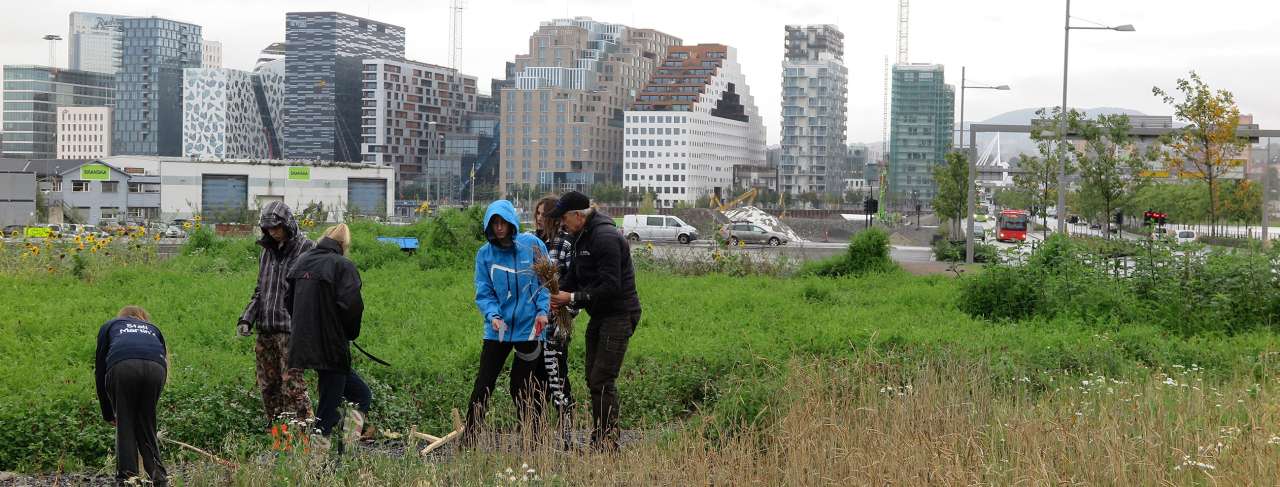Urban farming for resilience and health

Photo: Erik Joner
Urban citizens have little knowledge of how the food we eat is produced. Through participation in urban farming, more people can contribute to local food production and improve their own health.
Today, over 80% of Norway’s population lives in cities and towns. Unfortunately, more than 70% of green spaces have disappeared from these same cities and towns since the 1950s. This means that we are growing increasingly distant from nature, the earth, and food production.
But living in a city does not have to mean just asphalt and exhaust fumes. More and more municipalities are actively working to prioritise land for green spaces and buzzing insects. In 2024, NIBIO published a guide for urban farming, offering advice to municipalities that are just starting out.
“The most important would be if municipalities can provide good facilitation and suitable areas for urban farming. And they must offer guidance on organising and growing in practice,” says Dr Arne Sæbø.
“In addition, it is crucial to have passionate individuals who are interested and motivated to carry out the work in practice.”
Many allotment gardens, community gardens, and co-operative farms have too few plots and long lists of people wanting a plot. This means there is great potential to expand.
Additionally, there are exciting opportunities in alternative forms of urban farming. In the German town of Andernach, they have created a so-called “edible city.” Here, they have planted edible plants, fruit and berry bushes, and vegetables in the city’s green spaces. Volunteers maintain the green spaces, and all the city’s residents can harvest freely.
“Growing good produce can give a sense of pride from contributing to something that benefits the community,” says Sæbø.
Contacts

Purpose
Better facilitation for urban farming in Norwegian municipalities. The benefits can be very large, especially when considering public health, social integration, and preparedness.
Collaboration: Ministry of Agriculture and Food, Norwegian Environment Agency, and municipalities
Funding: Ministry of Agriculture and Food
Contacts

